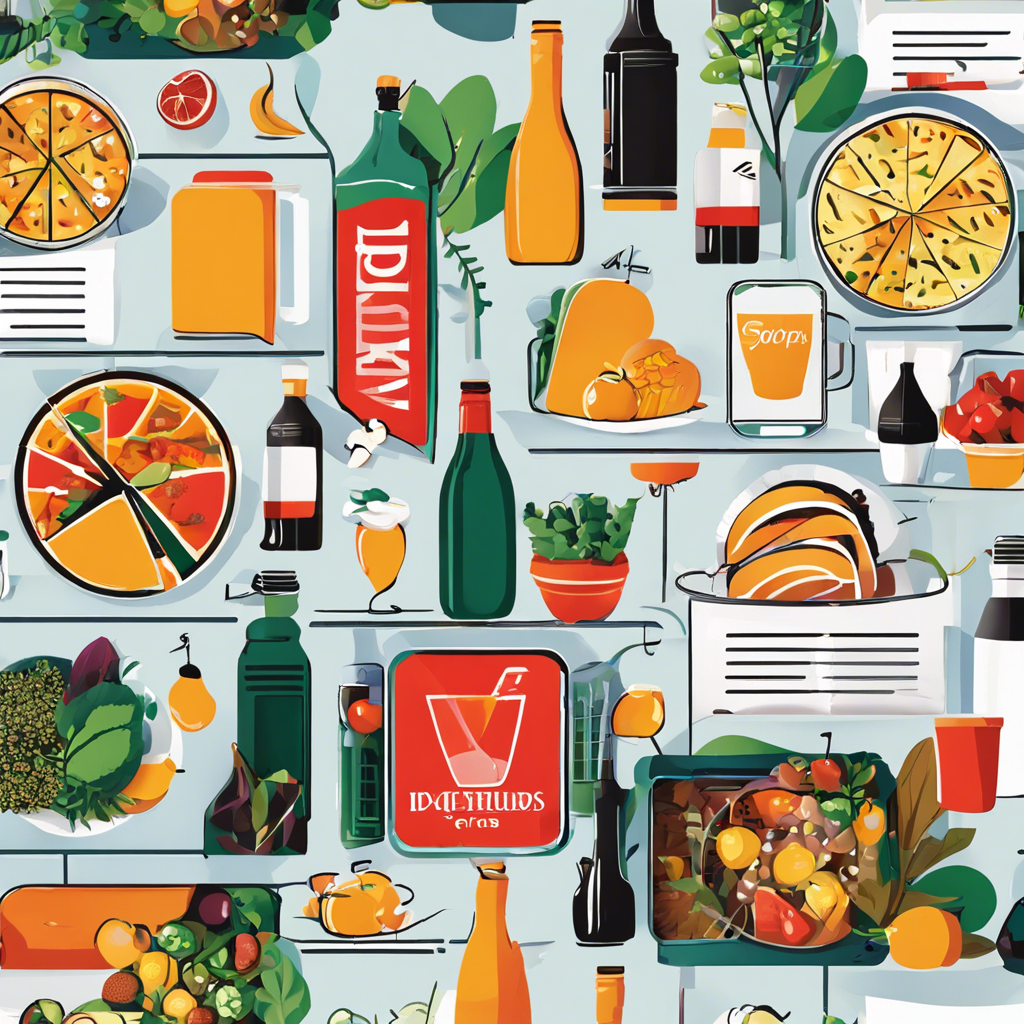Exploring the impact of digital marketing strategies for the food and beverage industry.
In the ever-evolving landscape of the food and beverage industry, staying ahead of the competition and capturing the attention of consumers is paramount. With the digital age upon us, marketing strategies have taken a leap into the virtual realm, offering businesses a powerful tool to engage with their audience in new and innovative ways. This article delves into the effectiveness of digital marketing within the food and beverage sector, examining its impact on brand visibility, customer engagement, and overall success.
The Rise of Digital Marketing in the Food and Beverage Industry
The food and beverage sector is a highly competitive market, with countless options available to consumers. As such, companies are increasingly turning to digital marketing to differentiate themselves and create a unique brand identity. This modern approach allows businesses to build a strong online presence, reach a wider audience, and foster meaningful connections with their target market.
By leveraging various digital platforms and tools, companies can create a comprehensive marketing strategy that encompasses social media, email campaigns, search engine optimization, and more. These methods enable businesses to showcase their products and services, share valuable industry insights, and build a loyal customer base.
The Power of Social Media
Social media platforms like Instagram, Facebook, and Twitter have become essential tools for food and beverage brands to connect with their audience. These platforms provide a visual showcase for products, allowing companies to create a unique brand personality and engage directly with customers.
Through strategic content creation, businesses can establish a strong online presence, attract new followers, and convert them into loyal customers. For instance, a pizza restaurant could create a captivating Instagram profile featuring mouth-watering images of their signature pies, behind-the-scenes videos of the kitchen, and interactive stories that engage customers in real-time. This approach not only generates interest but also builds a community of engaged followers who become brand ambassadors.
Email Marketing: A Direct Line to Customers
Email marketing is another powerful tool in the digital marketer’s arsenal. By building an email list, food and beverage companies can send targeted campaigns directly to customers’ inboxes, keeping them informed about new products, promotions, and industry news. According to Campaign Monitor, email generates $42 for every $1 spent, making it an incredibly effective marketing strategy.
For example, a local coffee shop could send a weekly newsletter highlighting their featured blends, special offers, and customer loyalty programs. By providing valuable content and exclusive offers, businesses can nurture relationships with existing customers and encourage repeat business.
Overcoming Challenges and Measuring Success
While digital marketing offers numerous opportunities, there are also challenges to overcome. Here are some key considerations for food and beverage businesses looking to maximize their digital presence:
Creating Engaging Content
With countless businesses vying for attention online, creating engaging content is essential. Whether it’s sharing recipes, behind-the-scenes videos, or hosting interactive giveaways, finding creative ways to capture and retain the audience’s interest is crucial.
Building an Online Community
Encouraging customer interactions and building a community around the brand can foster loyalty and create a sense of belonging. This can be achieved through online forums, social media groups, or hosting virtual events.
Measuring Digital Marketing Success
Determining the effectiveness of digital marketing efforts is vital for businesses to understand their return on investment. Here are some key performance indicators to consider:
Website Traffic and Engagement
Tracking website traffic and user engagement metrics can provide insights into the effectiveness of online campaigns. Tools like Google Analytics can help monitor page views, bounce rates, and average session durations.
Social Media Metrics
Measuring social media engagement, such as likes, shares, comments, and followers, can help gauge the success of social campaigns. Tools like Hootsuite and Sprout Social provide comprehensive analytics to track these metrics.
FAQs
How can I increase my brand visibility through digital marketing?
To increase brand visibility, focus on creating high-quality, shareable content that resonates with your target audience.
What are some effective ways to use email marketing in the food and beverage industry?
Email marketing can be powerful for sending targeted campaigns, offering exclusive promotions, and building customer loyalty. Segmenting your email list by interests or purchase history can help create more personalized and relevant content for subscribers.
How can I measure the success of my digital marketing campaigns?
Measuring campaign success involves tracking key performance indicators like website traffic, social media engagement, and conversion rates. Tools like Google Analytics and social media analytics platforms provide valuable insights to gauge the effectiveness of your marketing efforts.
Conclusion
Digital marketing has revolutionized the way food and beverage businesses connect with their customers. By leveraging social media platforms, email campaigns, and other online tools, companies can establish a strong brand presence, engage with their audience, and drive business growth. The key to success lies in creating valuable content, fostering a sense of community, and continuously measuring and adapting marketing strategies to stay ahead in the competitive digital landscape.
Resources:
1. The Future of Food and Beverage Marketing: Trends and Strategies
2. The Ultimate Guide to Email Marketing
3. Social Media Strategy Guide
